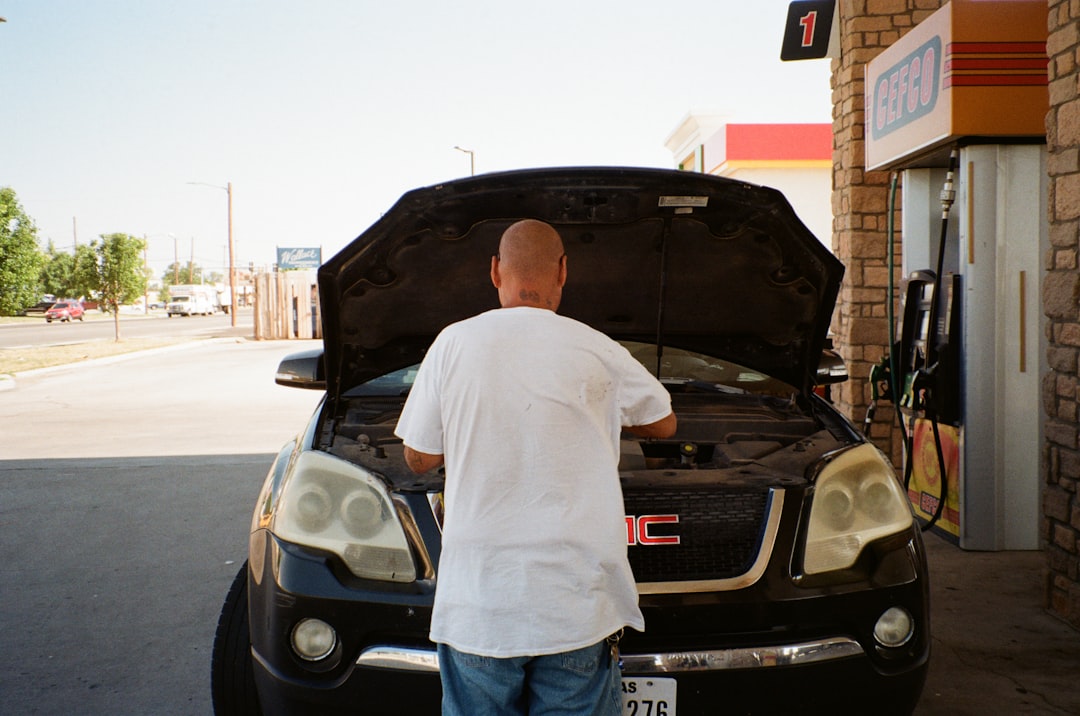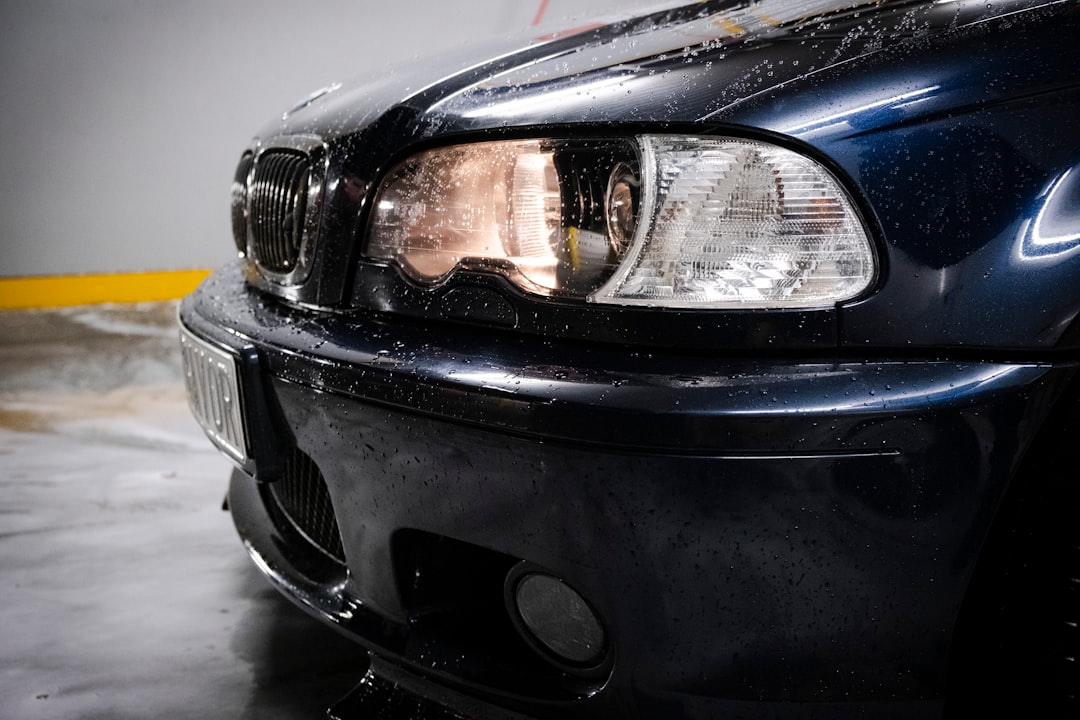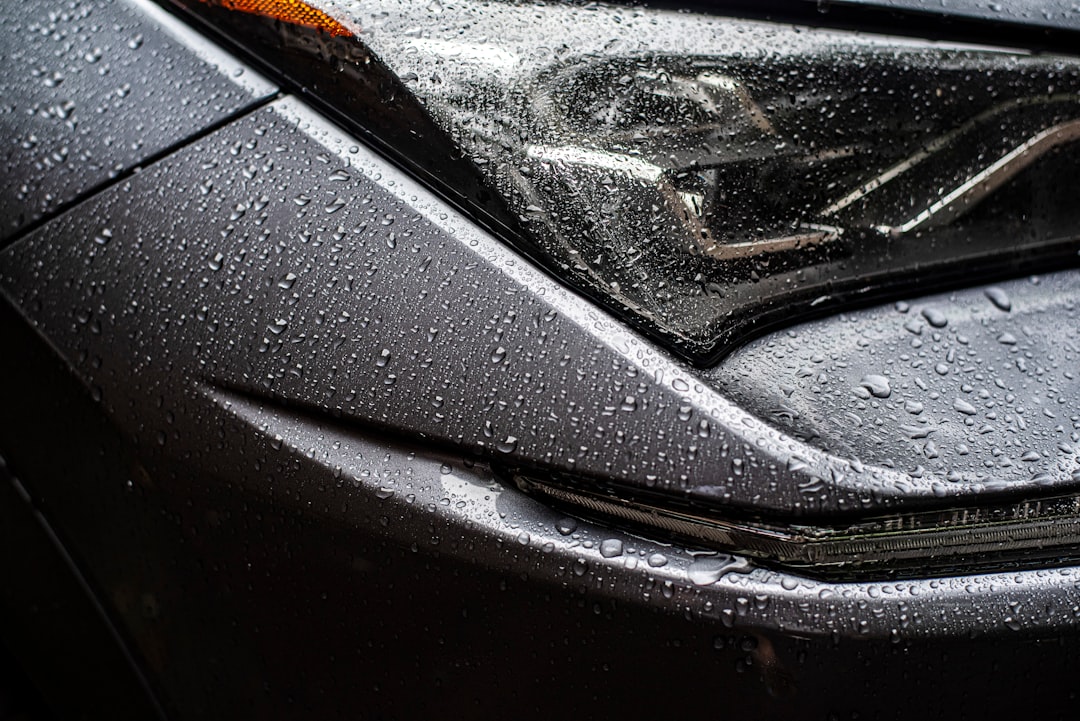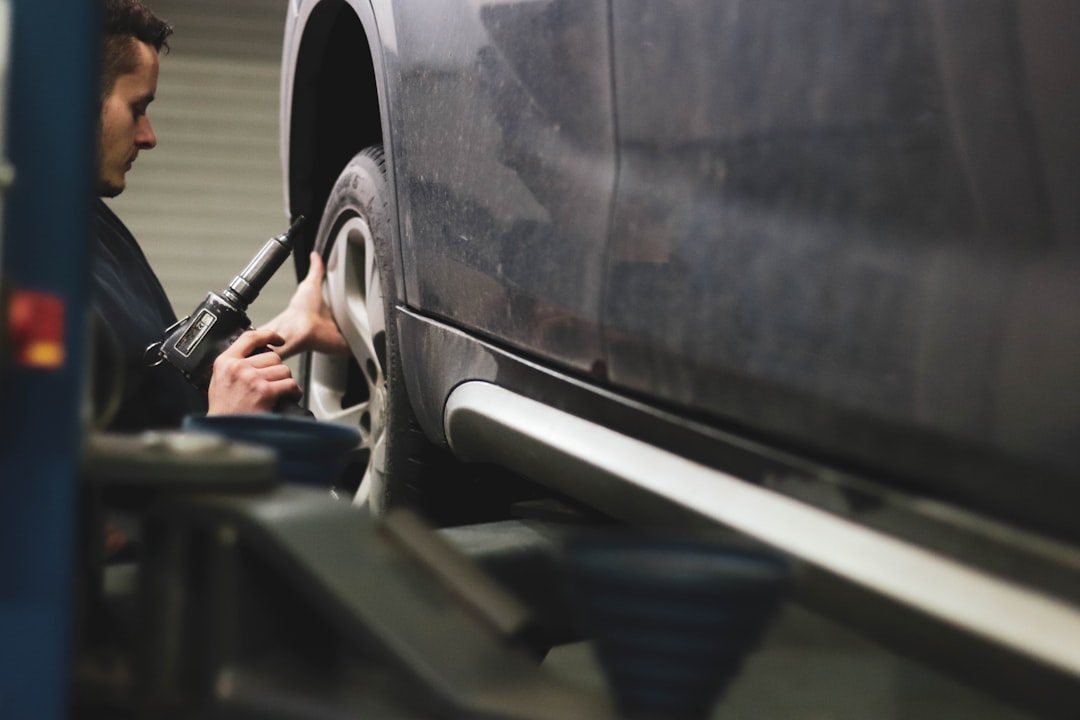

Engage prospects with a scan and streamline customer engagement with FREE QR code marketing tools by Sona – no strings attached!
Create a Free QR CodeFree consultation

No commitment

Engage prospects with a scan and streamline customer engagement with FREE QR code marketing tools by Sona – no strings attached!
Create a Free QR CodeFree consultation

No commitment
In today’s digitally driven world, QR codes have shifted from novelty to necessity, bringing efficiency and accountability to service-based businesses. For auto hail repair services, connecting in-person customer interactions with digital lead capture is a frequent challenge. Many businesses miss high-value prospects as customers receiving estimates, dropping off vehicles, or viewing printed advertisements may never get entered into any system, resulting in lost opportunities and inaccurate measurement.
QR codes offer a strategic way to eliminate that gap, transforming appointment cards, service invoices, and outdoor signage into powerful lead generation assets. Without requiring customers to download an app or navigate a complex website, a simple scan can start a quote request, repair booking, or insurance claim, reducing friction and enabling prompt follow-up before competitors step in.
Modern QR solutions such as Sona QR’s product overview also unlock key data that can inform future campaigns and improve conversion rates. As more auto hail repair services aim to convert walk-ins and boost outcomes, QR codes provide a seamless transition from physical engagement to actionable, measurable business value, ensuring every interaction supports growth.

QR codes bridge the gap between physical touchpoints and digital outcomes, addressing the challenge of anonymous or forgotten prospects in auto hail repair. From drive-by impressions on branded vehicles to paper estimate forms in the shop, every offline moment can become a digital entry point that captures intent, qualifies interest, and drives next steps.
To make QR codes work for your business goals, think beyond a generic link. Decide what you want the scan to do, then design the physical placement, the call to action, and the destination experience to produce that exact outcome. Replace outdated analog processes such as manual sign-up sheets, paper claim packets, and static brochures with targeted QR experiences that capture data automatically and trigger instant follow-up.
When you manage all codes through a platform like Sona QR, you can update destinations on the fly, auto-enrich CRM records, and surface actionable signals such as repeat scans or strong interest in insurance support. This turns one quick scan into an orchestrated customer experience that closes the loop between awareness and booked repair.

Auto hail repair services often lack visibility into who is interacting with their offline marketing. Prospective customers see branded vans, yard signs, or mall displays, they pick up estimate forms or hear about you during a community event, then they leave without taking digital action. Without a mechanism to turn that attention into a tracked lead, valuable prospects remain unknown and unpursued.
QR codes solve that disconnect. They provide a one-tap bridge from curiosity to conversion, making it easy for customers to engage at their convenience and for your team to respond quickly with the right information. They also reduce friction for time-sensitive needs such as quick estimates after a storm or starting an insurance claim while emotions are high and readiness to act is strong. See how one dealer positions its hail damage repair offering as a clear next step from discovery to booking.

Using the right QR code format for the job maximizes engagement, reduces friction, and helps your team collect the data needed to move fast. In auto hail repair, the most effective formats are those that capture intent and initiate a service interaction without burdening the customer.
Dynamic QR codes are ideal for hail shops. They allow you to switch destinations during a storm surge, segment by campaign source, and unlock advanced analytics. With Sona QR’s use case library, you can generate all of these formats, test them, and manage their performance from one place without reprinting a single asset.

Growth in auto hail repair is often capped when businesses overlook offline touchpoints that generate interest but go untracked. QR codes convert those analog moments into measurable lead flow, helping teams prove what works and double down on it.
Start by mapping every place a customer might see your brand, then attach a scan-to-action that moves them forward in the journey. In storm-prone markets, the window from damage to decision is short. Speed and clarity determine who wins the job.
Focus on these offline hotspots first. They typically deliver the biggest wins quickly because they tap into existing traffic and intent, then eliminate the manual steps that cause leakage.

Delays or incomplete data collection at key customer moments can be resolved with effective QR code deployment. By aligning a scan with the next best action, you reduce drop-off and speed up revenue.
Use cases like these map naturally to the hail damage customer journey. They help customers act with confidence and give your team everything needed to convert intent into a scheduled repair.
Every QR scan is a behavioral signal. It tells you where the prospect was, what message they saw, and what they wanted in that moment. When you deploy multiple QR codes across placements and funnel stages, you can segment your audience automatically and use that data to run precise follow-up campaigns.
For auto hail repair, segmenting by intent is particularly valuable. A scan for "Fast estimate by photo" indicates urgency. A scan for "Insurance help" suggests they value guidance. A scan from "Event booth tips for hail prevention" indicates early-stage interest. Treating these audiences differently improves relevance and conversion. For deeper strategy, see Sona’s blog post on intent data.
The result is audience building based on real behavior, not guesswork. By aligning campaigns to intent and context, you reduce wasted spend and raise the likelihood of fast, high-quality conversions.
QR codes are connectors. They unify offline and digital touchpoints so customers can take action immediately and you can measure what is working. When deployed across channels, they turn every brochure, decal, and display into a measurable entry point for your funnel.
The key is consistency. Use a clear visual system and a benefit-led call to action across all materials. Replace generic URLs with scanable codes and align each destination with the channel’s context. For example, a TV spot viewed by a family at home might point to "Book a mobile inspection," while a shop poster should point to "Check availability today" for customers already on site.
Sona QR centralizes this multi-channel approach. You can manage codes, update destinations, and sync scan data with your CRM and ad platforms. This creates a connected offline-to-online funnel that you can analyze, optimize, and scale.
Clarify your primary business objective, then select one or two use cases that directly support it. For a hail shop, objectives might include increasing spring repair appointments, enabling faster insurance claim starts, or capturing more reviews to boost local SEO. Choosing a focused use case prevents scattershot deployments that are hard to measure and improve.
Translate the objective into a specific action you want the scanner to take. For example, "Drive 200 photo-based estimate submissions in April" or "Increase claim initiation scans from invoices by 25 percent." With that focus set, you can craft the call to action, the destination experience, and the follow-up workflow to support the desired outcome.
Pick a code type that aligns with your measurement needs and the flexibility you want after printing. Static codes are suitable for fixed assets that will not change, such as a permanent sign pointing to your homepage. Dynamic codes are best for campaigns where you need analytics, A/B testing, or post-print updates.
In auto hail repair, dynamic codes are usually the right default. They provide scan-level analytics and let you redirect destinations as the season shifts. With Sona QR, you can also attach UTM parameters, build retargeting audiences from scan events, and plug scan data into HubSpot or Salesforce for end-to-end attribution.
Design codes for scannability first, then brand them for recognition. Keep sufficient quiet space around the code, use high contrast, and maintain a minimum size based on viewing distance. Add your logo and a border or frame to draw the eye. Place a clear call to action immediately adjacent to the code such as "Scan for a free estimate in 60 seconds."
Before deploying, test across iOS and Android devices, at multiple angles and distances, and under different lighting conditions. Validate that the destination loads quickly on mobile, that forms are easy to complete with one hand, and that the thank-you page triggers the right follow-up, such as a confirmation text or a calendar invite.
Roll out codes to the placements most likely to capture intent. For hail shops, high performers include estimate forms, waiting room displays, drop-off instructions, vehicle decals, and direct mail to storm-affected neighborhoods. Tailor the call to action to context. On a van decal, use "Scan for a fast quote." On a front desk sign, use "Check today’s repair availability."
Stagger the launch to observe performance differences by channel, then expand to secondary placements such as community bulletin boards, partner body shops, or local car wash handouts. Keep versions unique by location and message so you can see which combinations consistently produce quality leads.
Monitor scan metrics such as total scans, unique scanners, location, time of day, and downstream conversion rate. Connect Sona QR to your CRM to auto-create leads with source attribution, then build dashboards that show scans to booked appointment and scans to completed repair. This visibility helps you make the case for more investment or a pivot in creative.
Continuously improve the experience. A/B test calls to action, change destination layouts, and adjust form fields. Expand what works, retire what does not, and reuse high-performing formats in new neighborhoods or events. Optimization turns a one-time test into a dependable lead engine.
Many auto hail repair businesses struggle to link offline engagement to revenue. A neighbor sees your truck, a homeowner pockets your flyer, or a visitor reads your countertop sign, yet you do not know who engaged, what they wanted, or whether they converted. Without this visibility, it is hard to prove ROI or decide where to spend more.
QR codes fix the visibility gap. By tracking scans and tying them to actions such as form fills, consultations, and appointments, you can see precisely which touchpoints are producing results. With Sona QR, these insights become actionable because scan data can be enriched, synced to your CRM, and attributed to revenue using multi-touch models. For methodology on measuring offline impact, read Sona’s guide to offline attribution.
When scans are connected to outcomes, QR codes evolve from a gimmick to a performance channel. They deliver the data you need to guide strategy and allocate budget with confidence.
The difference between a QR program that trickles and one that drives steady pipeline is process. Consistency in design, placement, tracking, and follow-up translates into higher scan rates and more conversions. Equip your team with simple rules and automation, then iterate based on data.
Choose tips that align with your most common media and buyer journey. For hail shops, that usually means direct mail, vehicle decals, in-shop signage, and post-service touchpoints that fuel reviews and referrals.
You can generate and track your first QR codes for free with Sona QR. Start creating QR codes for free, create a few dynamic codes, and use these tips to turn them into a measurable growth channel.
When hail hits, the shops that capture demand quickly win. QR codes make that capture measurable and repeatable. The following examples show how smart placements and dynamic destinations lead to better outcomes across the funnel.
These stories highlight a pattern. When you place the right code with the right message in the right environment, you make it effortless for customers to act and easy for your team to capture, measure, and optimize that action.
QR codes are more than a marketing shortcut, they enable auto hail repair services to turn every customer interaction into a measurable, revenue-generating opportunity. By capturing high-value prospects who might otherwise remain anonymous and by tying offline touchpoints to real business results, QR codes bridge the gap between discovery and decision.
With integrated workflows, smart attribution, and customer-friendly interfaces, your shop can accelerate engagement, execute timely follow-ups, and prove what is working. Sona QR and Sona.com give you the tools to manage codes centrally, track scans, sync data to your CRM, and attribute revenue with confidence. Start with one focused use case, measure the impact, and scale what wins. Each step in the hail damage repair journey becomes an opportunity for growth and lasting customer relationships.
QR codes have revolutionized the auto hail repair services industry by transforming traditional marketing efforts into dynamic, measurable lead generation tools. Whether it’s capturing new customers, streamlining appointment bookings, or enhancing follow-up communication, QR codes simplify the path from interest to action—turning every flyer, vehicle sticker, or estimate sheet into a powerful lead capture asset. Imagine instantly knowing which materials bring in the most repair requests and being able to optimize your campaigns on the fly.
With Sona QR, you can effortlessly create dynamic, trackable QR codes that update in real time without costly reprints. Every scan connects directly to your lead management system, helping you nurture prospects and accelerate conversions with data-driven precision. Start for free with Sona QR today and turn every scan into a loyal customer and every campaign into measurable growth.
Choose a service that uses efficient lead capture methods like QR codes to ensure prompt follow-up and quality repair, and verify their ability to provide fast estimates, insurance claim support, and measurable results.
Paintless dent repair involves removing hail damage dents without repainting by using specialized techniques that preserve the original paintwork, often facilitated by services that streamline bookings and estimates through digital tools like QR codes.
The article does not specify exact repair costs, but offers that fast, photo-based estimates can be requested via QR codes to provide accurate pricing quickly.
Best practices include using QR codes on offline materials like flyers, vehicle decals, direct mail, and event signage to capture leads, track engagement, segment audiences by intent, and integrate scan data with CRM systems for timely follow-up and optimized campaigns.
Ensure quality by selecting repair services that offer clear communication, easy access to estimates and insurance claim guidance through QR codes, and that provide measurable tracking from damage assessment to completed repair for accountability.
Use Sona QR's trackable codes to improve customer acquisition and engagement today.
Create Your FREE Trackable QR Code in SecondsJoin results-focused teams combining Sona Platform automation with advanced Google Ads strategies to scale lead generation

Connect your existing CRM

Free Account Enrichment

No setup fees
No commitment required

Free consultation

Get a custom Google Ads roadmap for your business






Launch campaigns that generate qualified leads in 30 days or less.
